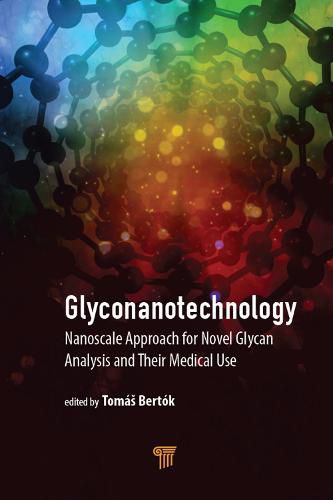Readings Newsletter
Become a Readings Member to make your shopping experience even easier.
Sign in or sign up for free!
You’re not far away from qualifying for FREE standard shipping within Australia
You’ve qualified for FREE standard shipping within Australia
The cart is loading…






Glycomics (a comprehensive study of glycans, often denoted as the third alphabet of molecular biology, besides nucleic acids and proteins) relies on techniques that use heavy machinery , such as mass spectrometry, liquid chromatography, and capillary electrophoresis. The use of biosensors and biochips for glycan analysis offers the possibility of lower costs, lower time and sample consumption, and ease of use. This highly interdisciplinary book introduces students, researchers, and professionals to the broad scope of this area, including the basics of nanotechnology and materials science, glycomics, and bioanalytical chemistry, as well as several historical facts, contexts and future perspectives. The introductory chapters are utilized in the book later for the state-of-the-art chapters on glycan-based diagnostics and imaging, enrichment techniques, and therapy, which makes this book unique and of great interest to a wide audience. The authors are skilled specialists and research scientists with many years of experience in this area and former investigators on a prestigious European Research Council Starting Grant.
$9.00 standard shipping within Australia
FREE standard shipping within Australia for orders over $100.00
Express & International shipping calculated at checkout
Glycomics (a comprehensive study of glycans, often denoted as the third alphabet of molecular biology, besides nucleic acids and proteins) relies on techniques that use heavy machinery , such as mass spectrometry, liquid chromatography, and capillary electrophoresis. The use of biosensors and biochips for glycan analysis offers the possibility of lower costs, lower time and sample consumption, and ease of use. This highly interdisciplinary book introduces students, researchers, and professionals to the broad scope of this area, including the basics of nanotechnology and materials science, glycomics, and bioanalytical chemistry, as well as several historical facts, contexts and future perspectives. The introductory chapters are utilized in the book later for the state-of-the-art chapters on glycan-based diagnostics and imaging, enrichment techniques, and therapy, which makes this book unique and of great interest to a wide audience. The authors are skilled specialists and research scientists with many years of experience in this area and former investigators on a prestigious European Research Council Starting Grant.